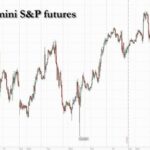
–>
January 4, 2023
When they enter the medical profession, medical students are required to take the Hippocratic Oath, which includes a provision to “do no harm.” Perhaps economists at the Federal Reserve Board should be required to take a similar oath. Based on their performance over the past two decades, Fed economists have failed to use monetary policy to fulfill the twin mandate of price stability and full employment.
‘); googletag.cmd.push(function () { googletag.display(‘div-gpt-ad-1609268089992-0’); }); }
During the Great Moderation in monetary policy in the 1980s and 1990s under the leadership of Fed chairmen Paul Volcker and Alan Greenspan, the Fed fulfilled this mandate, adjusting the federal funds rate in response to economic conditions. After inheriting an economy that experienced stagflation in the 1970s, Chairman Volcker increased the federal funds rate to more than 20 percent. Over the next two decades, Volcker and Greenspan gradually reduced the federal funds rate to 6 percent. These monetary policies contributed to greater economic stability, and by the end of the period they brought inflation and unemployment into line with Fed targets. Combined with more prudent fiscal policies, these monetary policies enabled Congress to balance the budget and stabilize the national debt.
Unfortunately, over the past two decades, the Fed has not only failed to fulfill this mandate, but monetary policy has been a major source of economic instability. The Fed has taken us on a roller coaster ride as revealed in the federal funds rate. In response to the financial crisis in 2008, the Fed adopted a 0 percent federal funds rate and kept the rate close to 0 for the next six years. In 2016, the Fed began to increase the federal funds rate, but with the onset of the coronavirus pandemic in 2020 they again adopted a 0 percent rate. With the resurgence of inflation in 2022, the Fed has again reversed policy, with sharp increases in the federal funds rate. There has never been a period in which the federal funds rate has been so volatile, or when the Fed has held the federal funds rate artificially low for such a long period.
The monetary policies pursued by the Fed over the past 20 years have contributed to economic instability. The 0 percent federal funds rate policy, holding interest rates artificially low, motivates malinvestment, i.e., investments that result in unsustainable credit expansion. These investments cease to be profitable once reasonable interest rates return. Malinvestment became clear during the Great Recession in 2008, as artificially low interest rates combined with Fed purchases of mortgage-backed securities fueled an unprecedented housing boom and bust.
‘); googletag.cmd.push(function () { googletag.display(‘div-gpt-ad-1609270365559-0’); }); }
Congress also contributed to this economic instability by financing the purchase of mortgage securities through Fannie Mae and Freddie Mac. During the Great Recession, the federal government bailed out government lending institutions as well as private corporations and financial institution. These bailouts created a new generation of “zombie enterprises” that now depend on government subsidies and bailouts to keep them afloat.
I t is not clear how the Fed will end this roller coaster ride and restore sound monetary policies that contribute to economic stability. The inflation genie is again out of the bottle and the economy is teetering on the brink of stagflation. Putting the inflation genie back in the bottle will be more difficult for Fed Chairman Jerome Powell than it was for his predecessors. Powell has responded to the resurgence of inflation by increasing the federal funds rate and has begun to unwind the huge portfolio of assets held in the Fed balance sheet. But it remains unclear how committed Powell is to this monetary tightening. In the past, he has pursued policies biased toward full employment, allowing inflation to drift above the Fed’s target. Powell is now under tremendous pressure from the private sector and Congress to not take the punchbowl away.
t is not clear how the Fed will end this roller coaster ride and restore sound monetary policies that contribute to economic stability. The inflation genie is again out of the bottle and the economy is teetering on the brink of stagflation. Putting the inflation genie back in the bottle will be more difficult for Fed Chairman Jerome Powell than it was for his predecessors. Powell has responded to the resurgence of inflation by increasing the federal funds rate and has begun to unwind the huge portfolio of assets held in the Fed balance sheet. But it remains unclear how committed Powell is to this monetary tightening. In the past, he has pursued policies biased toward full employment, allowing inflation to drift above the Fed’s target. Powell is now under tremendous pressure from the private sector and Congress to not take the punchbowl away.
The question is how to get off the Fed’s roller coaster ride and restore monetary policies that contribute to economic stability. Some economists argue that we should rely on the Fed to restore the prudent monetary policies pursued during the Great Moderation. Milton Friedman, John Taylor, and others have shown that if we had pursued these prudent rules over the past two decades we could have avoided much of the recent economic instability that still haunts us. If Fed officials had channeled the spirits of Paul Volcker and Alan Greenspan, they would have used informal monetary rules and indicative targets to achieve both price stability and full employment.
Another group of economists question whether we can continue to rely on discretionary monetary policies pursued by the Fed. They argue that monetary policy must be guided by formal monetary rules with objective targets against which to measure their effectiveness. Price stability must again be the primary objective of monetary policy, and Fed independence from Congress and the Treasury must be reestablished. Monetary rules should be incorporated in constitutional/statutory law with enforcement mechanisms to prevent the Fed from again falling off the rails. Fed officials must be held accountable for pursuing policies consistent with formal monetary rules. This will require more than a pledge to do no harm; when Fed leaders fail to commit to rules based monetary policy they should be fired.
Barry W. Poulson (think@heartland.org) is a policy advisor with The Heartland Institute and Professor Emeritus at the University of Colorado Boulder.
Dwight Lee is affiliated with Institute for the study of political economy in the Miller College of Business, Ball State University and Professor Emeritus at the University of Georgia.
‘); googletag.cmd.push(function () { googletag.display(‘div-gpt-ad-1609268078422-0’); }); } if (publir_show_ads) { document.write(“
Image: Federal Reserve
<!– if(page_width_onload <= 479) { document.write("
“); googletag.cmd.push(function() { googletag.display(‘div-gpt-ad-1345489840937-4’); }); } –> If you experience technical problems, please write to helpdesk@americanthinker.com
FOLLOW US ON
<!–
–>
<!– _qoptions={ qacct:”p-9bKF-NgTuSFM6″ }; ![]() –> <!—-> <!– var addthis_share = { email_template: “new_template” } –>
–> <!—-> <!– var addthis_share = { email_template: “new_template” } –>




